Despite headlines heralding the rise of electric vehicles (EVs), gas-powered cars continue to overwhelmingly dominate America’s highways and garages.
While EV sales have surged in recent years, gasoline vehicles still account for the vast majority of cars sold and driven across the nation.
Factors such as affordability, established fueling infrastructure, and consumer familiarity keep internal combustion engines firmly entrenched in the automotive landscape.
As policymakers and automakers push toward electrification, millions of Americans continue to rely on traditional gasoline-powered vehicles, underscoring the complex dynamics at play in the ongoing transition toward a greener transportation future.
In recent years, the automotive market has witnessed an exciting surge in the popularity of high-performance SUVs, vehicles uniquely designed to combine the thrill of sports car agility with the practicality of family-oriented safety features.
Today’s consumers no longer wish to compromise between exhilarating driving experiences and reliable, family-friendly designs.
Manufacturers have responded enthusiastically, infusing luxury, speed, and advanced safety technologies into these versatile vehicles.
This article explores the latest trends shaping the market, reviewing standout models that effortlessly blend dynamic performance and sophisticated safety, setting new benchmarks for what family SUVs can offer.
One of the wonderful (and humbling) things about being a car enthusiast is that you never stop learning. And the more you learn, the stronger your love for cars grows. Last year, while researching for an episode of the Drive the Bid Podcast, I came across an interestingly named accessory that Packard offered. It was a footrest, but the luxury automaker didn’t call it that, instead identifying it as a “hassock.” That led to me wanting to show all of you that and additional noteworthy accessories available from Packard in the late 1920s and 1930s, which you can see below.
COSMETIC
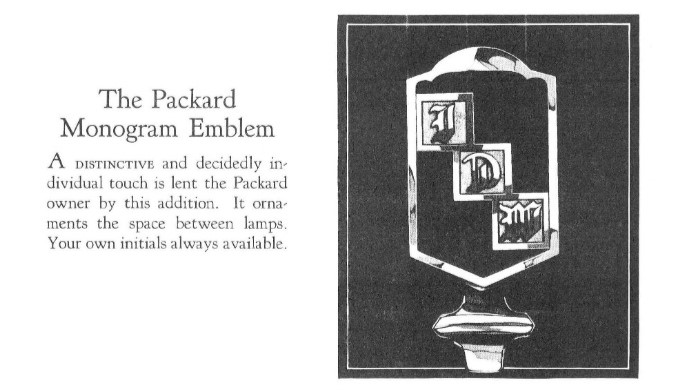
In 1929, you could order your Packard with a “de luxe” (aka “Goddess of Speed“) radiator emblem, or specify a personalized one with your initials on it. If that didn’t impress your passengers upon entry, they would definitely know you had made it in the world when they saw the flowers in your optional cut glass vase inside.
COMFORT AND CONVENIENCE – EXTERIOR
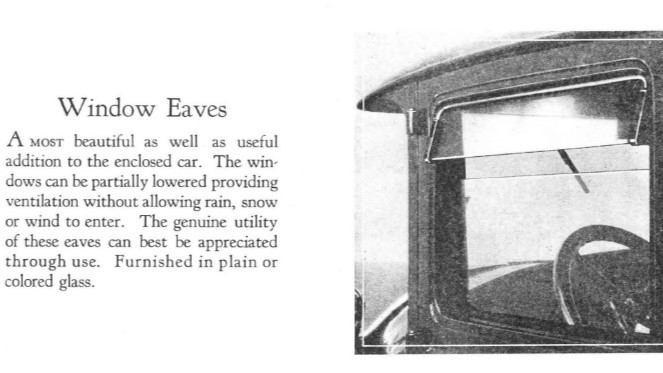
I can’t speak for you, but vent visors remind me of the 1990s and 2000s. As Packard’s accessory catalog shows, even back in 1929, people wanted to have their windows down a little yet keep the elements out of their cabins, which they could do with “window eaves.”
The vertical blades of the available Packard-Trico Visionall system kept rain and snow off the windshield; a rumble seat windshield was available to make sure the rear passenger’s smile was free of bugs when they got to their destination.
As long as the weather allowed people to play through, the running board-mounted golf bag holder was ready to transport up to three sets of clubs to the local course.
COMFORT AND CONVENIENCE – INTERIOR
Driving into the sun has never been pleasant, so it’s good to know Packard made a glare shield to prevent “blind driving,” according to its 1939 accessories catalog. The company was even kind enough to make it “non-inflammable” (does that mean it was flammable?).
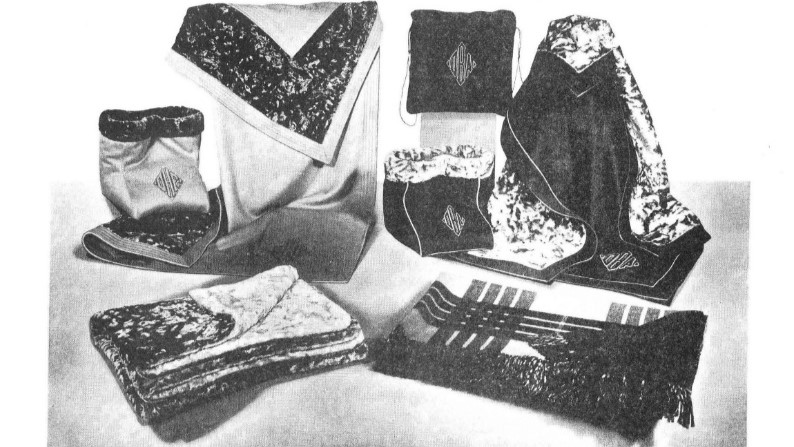
Those fortunate enough to ride in a Packard could make their trip a little cozier by covering up with a “robe” that had plush silk on one side and the same upholstery used in the cabin on the other. They could even put their feet up on one of those hassocks I mentioned earlier.
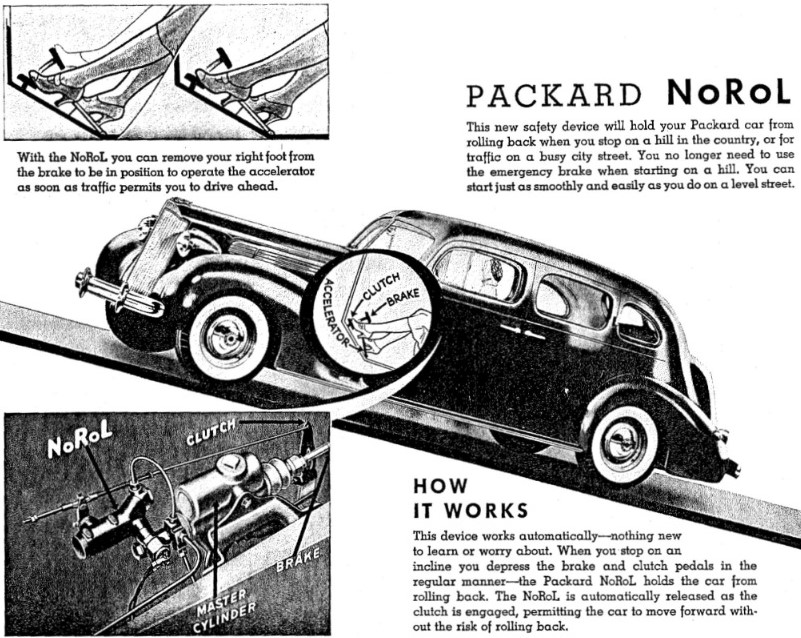
The biggest surprise of all is that way back in the ’30s, Packard had a hill hold feature, although it gave the technology a much cooler name: NoRoL. It engaged when the driver pressed the clutch and brake pedals down, holding the Packard in place on an incline; to get moving again, all the driver had to do was push the clutch.
*All photos courtesy of PackardInfo.com and Dezo’s Garage.
Affectionately known as the “Screaming Chicken,” Pontiac’s flaming phoenix that initially appeared on the hood of the 1973 Trans Am, is about as iconic as any identifier from the muscle car era. However, did you know that it literally rose from the dead to become the Trans Am’s trademark?
Designer Bill Porter was initially inspired by Hopi art when designing the Firebird logo. However, folks within Pontiac jokingly called it the “Sick Chicken,” so he was motivated to create an update for 1970. Inspired by a Tiffany vase that featured flame-like feathers, Porter designed a new bird that appeared to be rising. He then attached a huge version of it on the hood of a Trans Am and showed Bill Mitchell, Vice President of General Motors Design. Mitchell, who could make a sailor blush with the language he used, was not too kind towards the proposal.
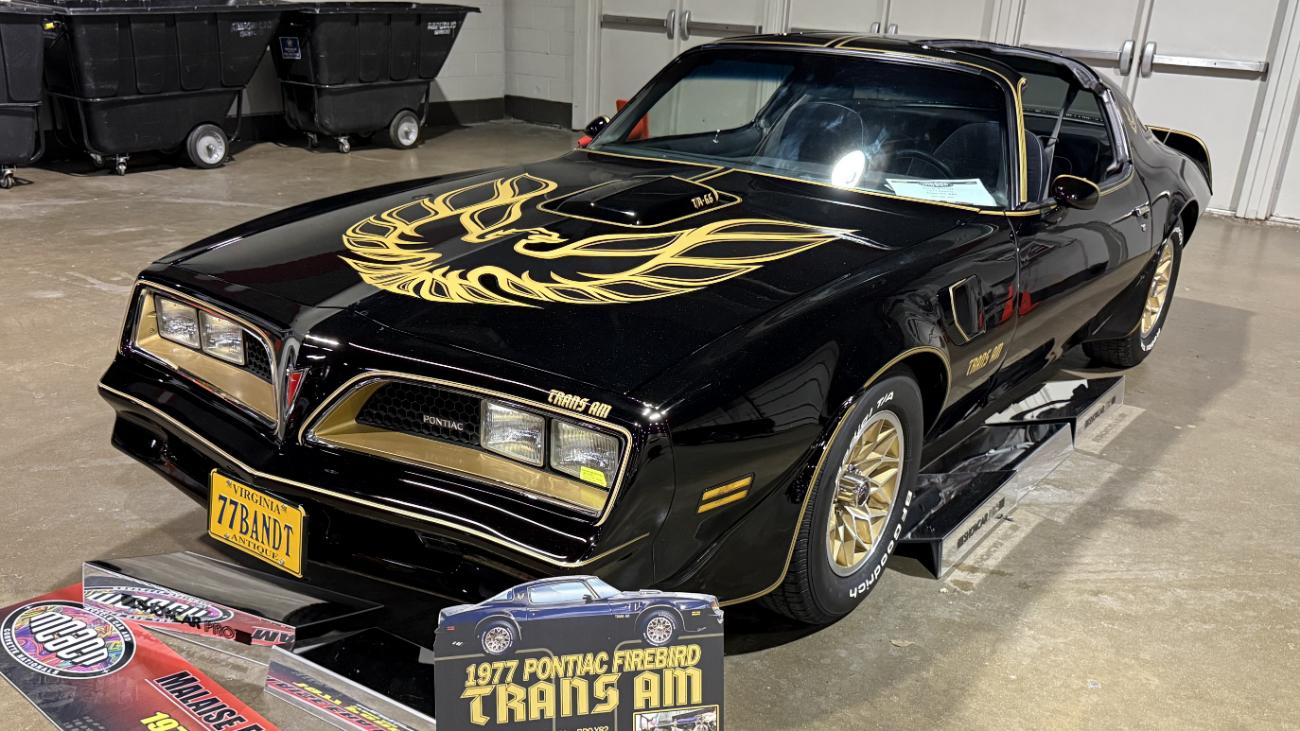
Around two years later, John Schinella, another designer, decided to revive the idea. He modified the bird slightly, then crafted decals for his own car and drove up and down Woodward Avenue to gauge reaction. Everyone loved it, so he applied the new treatment to Mitchell’s custom-built black and gold Trans Am. The car, flanked by Mitchel’s similarly hued motorcycles, were parked by his office. This time, there was no negative reaction, giving Schinella the opportunity to present to Pontiac’s lead designer, Chuck Jordan, and Pontiac executives. Several were not too keen on the Screaming Chicken, but the suggestion to make the decal an option was a compromise solution that was palatable.
This decal soon became synonymous with Trans Ams throughout its lifecycle, though the huge bird was last used in 1981. For the straight scoop, check out the above video from Original Motor Car via Dean’s Garage.
Are you ready for summer? Automakers seem to be. Toyota has a new TRD Pro color for 2026 called Wave Maker. Ford Performance is offering a new Coastal Package for the 2025 Bronco four-door complete with a lift and colorful graphics. Now comes news of a 1-of-1 Palm Beach Edition DB12 Volante from a collaboration between Q by Aston Martin, the British automaker’s in-house bespoke division, and Aston Martin Palm Beach.
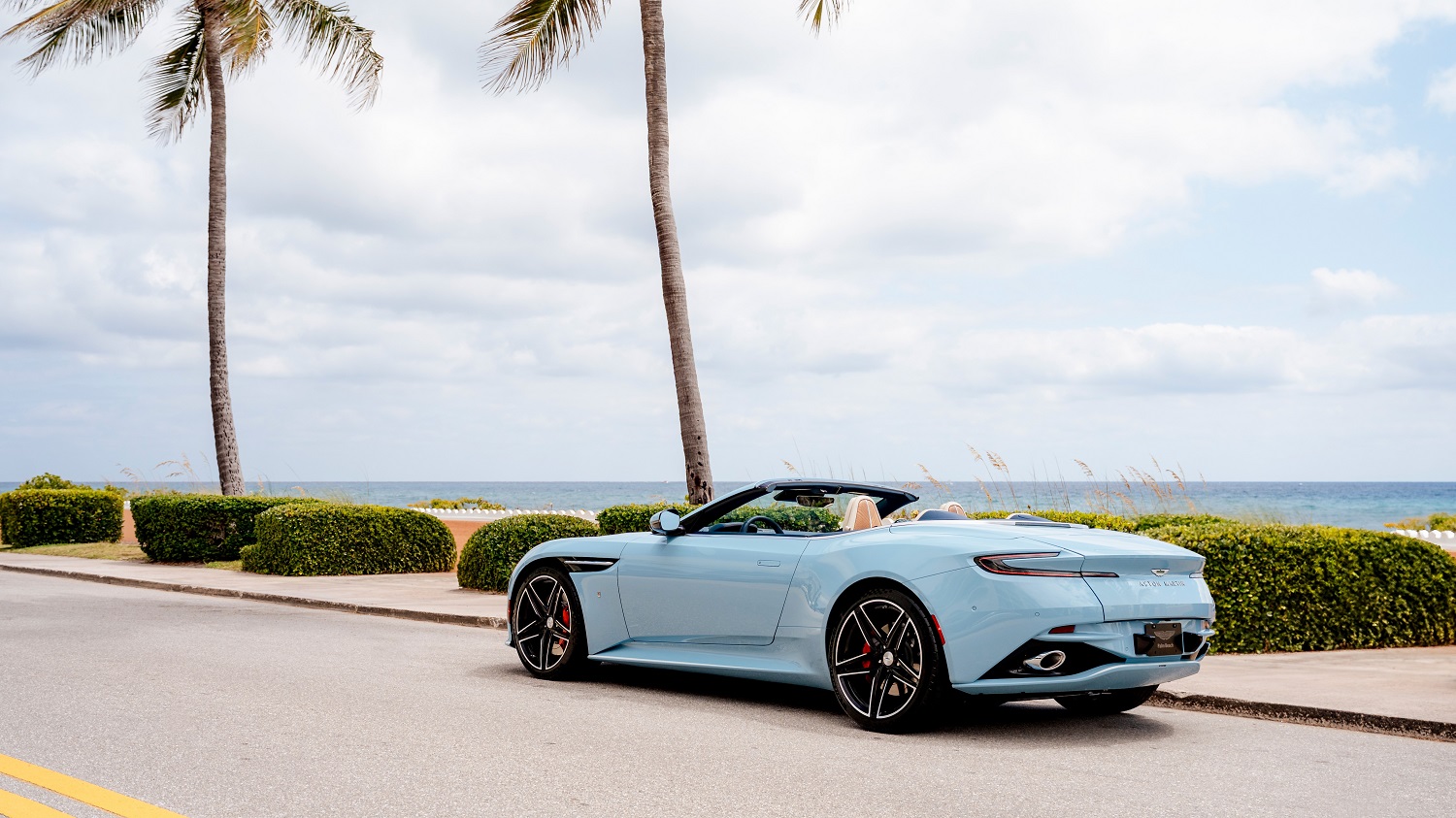
If you’ve never been to Palm Beach, Florida before, close your eyes and envision the ocean, sunshine, and palm trees, all of which are represented in this special DB12 Volante. According to Aston Martin, the exclusive Q by Aston Martin Frosted Glass Blue exterior paint was sprayed by hand and “exhibits qualities unique to the use of glass flakes within the topcoat, creating the unmistakeably mesmerising shimmer effect that perfectly encapsulates the south Florida sun.”
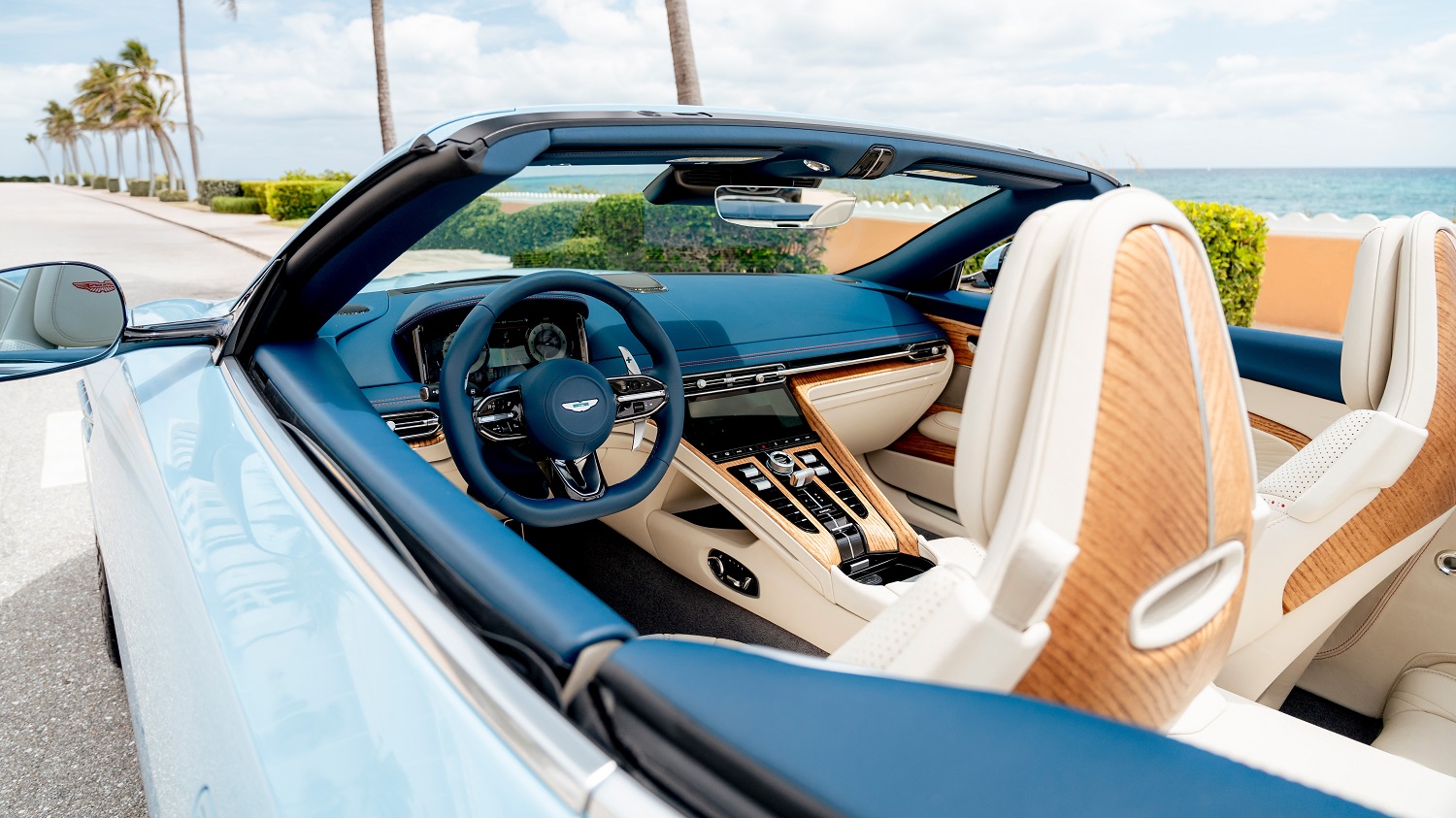
The eight-layer fabric power top lowers in 14 seconds to let in the rays and the coastal breeze, which will probably feel like a hurricane when the 670-horsepower 4.0-liter twin-turbo V8 is fully opened up.

A palm leaf motif is visible on everything from the aluminum side strakes above the front Gloss Jet Black diamond-turned wheels to the polished aluminum door sill plaques, Aurora Blue and Ivory leather seats, center armrest, and door panels. Although the wood accents were not cut from palm trees, Aston Martin chose open-pore Linear Light Olive Ash book-matched wood trim because its texture is similar. There are even more book-matched veneers – with a palm leaf pattern, of course – on the back of the seats. Should the well-heeled owner of this one-off happen to be far away from Palm Beach, they’ll know how to get there after they punch in the city’s latitude and longitude coordinates embossed on the leather dashboard into the DB12 Volante’s bespoke infotainment system.
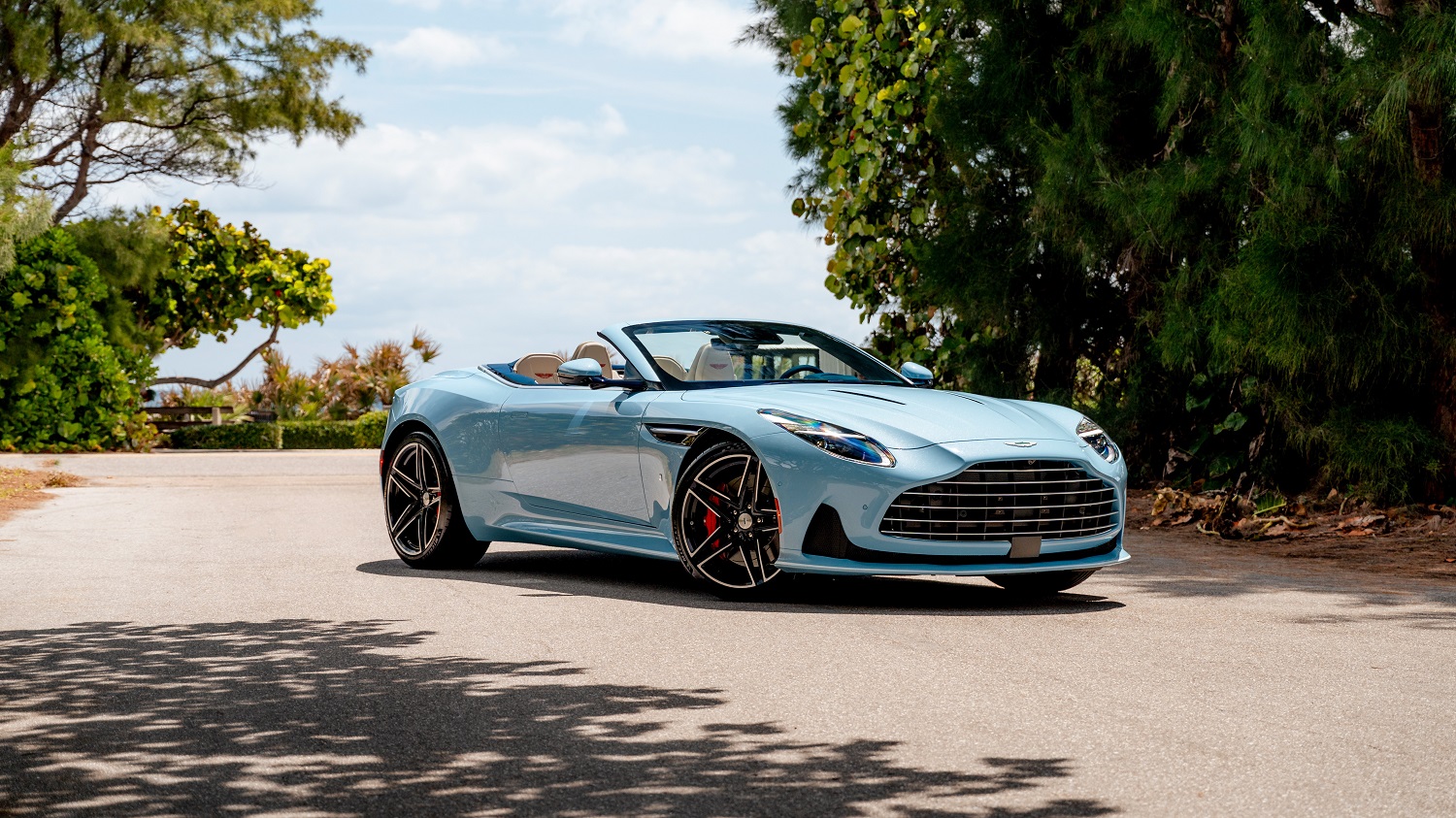
If you happen to be in Palm Beach in the near future and see this ultra-exclusive Aston, consider yourself lucky. If you don’t spot it, you’ll still be in Palm Beach so don’t get down (unless it’s hurricane season).
Hybrid vehicles have become increasingly popular among environmentally conscious drivers and those looking to cut fuel expenses.
However, not all hybrid models deliver the benefits they promise.
Some hybrids suffer from reliability issues, unexpectedly high maintenance costs, disappointing fuel economy, or lackluster performance that leaves drivers regretting their purchase.
It’s crucial to carefully research and understand which hybrid vehicles have a troubled history or negative owner feedback before making an investment.
In this article, we’ll highlight eight hybrid vehicles you should avoid, helping you steer clear of costly mistakes and ensuring you make the smartest possible choice for your driving needs.
Featured on AutoHunter is this 1957 Chevrolet Corvette, which is powered by an upgraded 327ci V8 paired with a three-speed manual gearbox. Finished in Cascade Green with white coves and equipped with an off-white soft top over a Parchment vinyl interior, this C1 Corvette is now offered by the selling dealer in Missouri with a matching removable hardtop and a clear Illinois title.
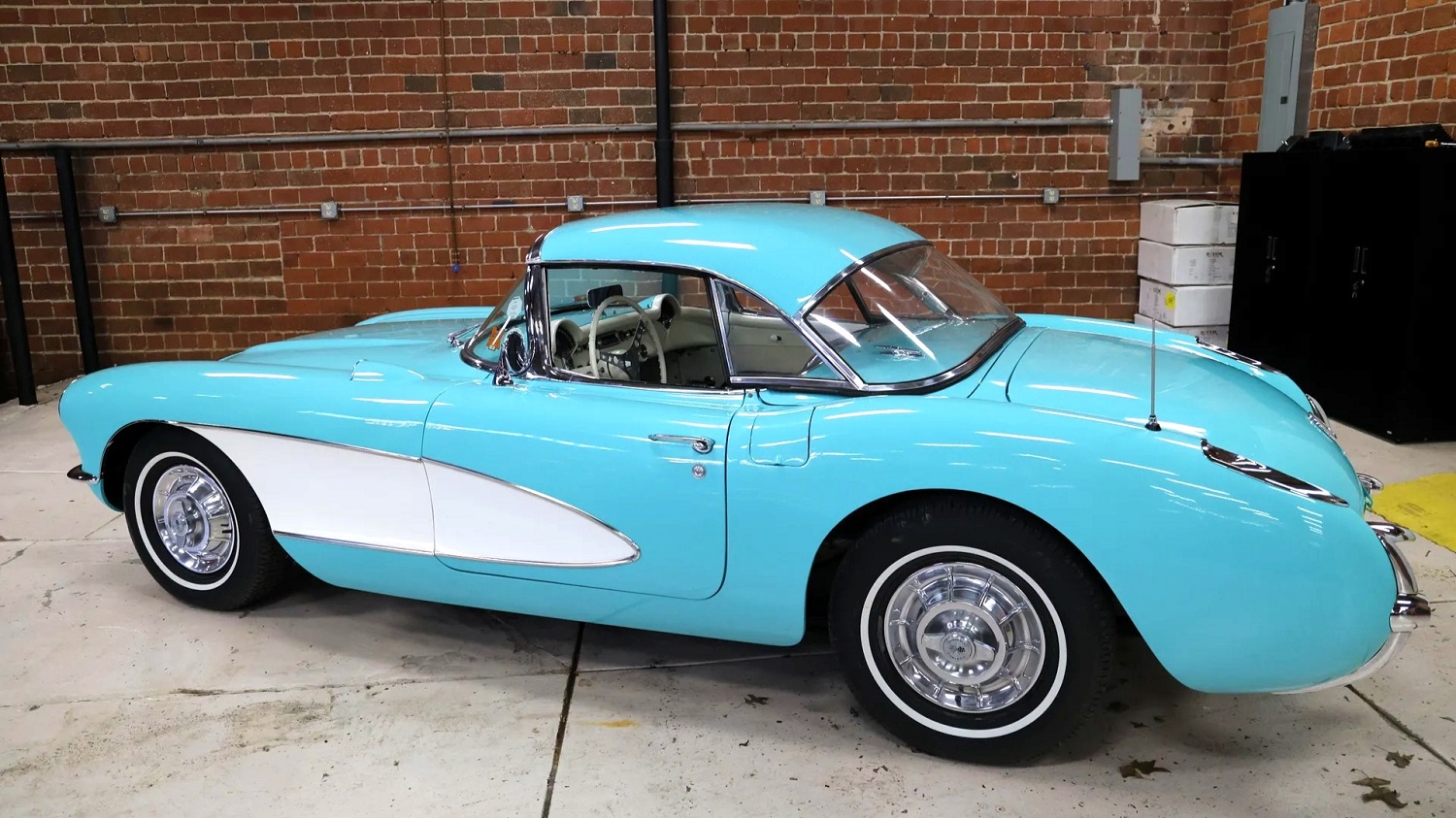
The Cascade Green body is accented with white coves and chrome bumperettes and trim.
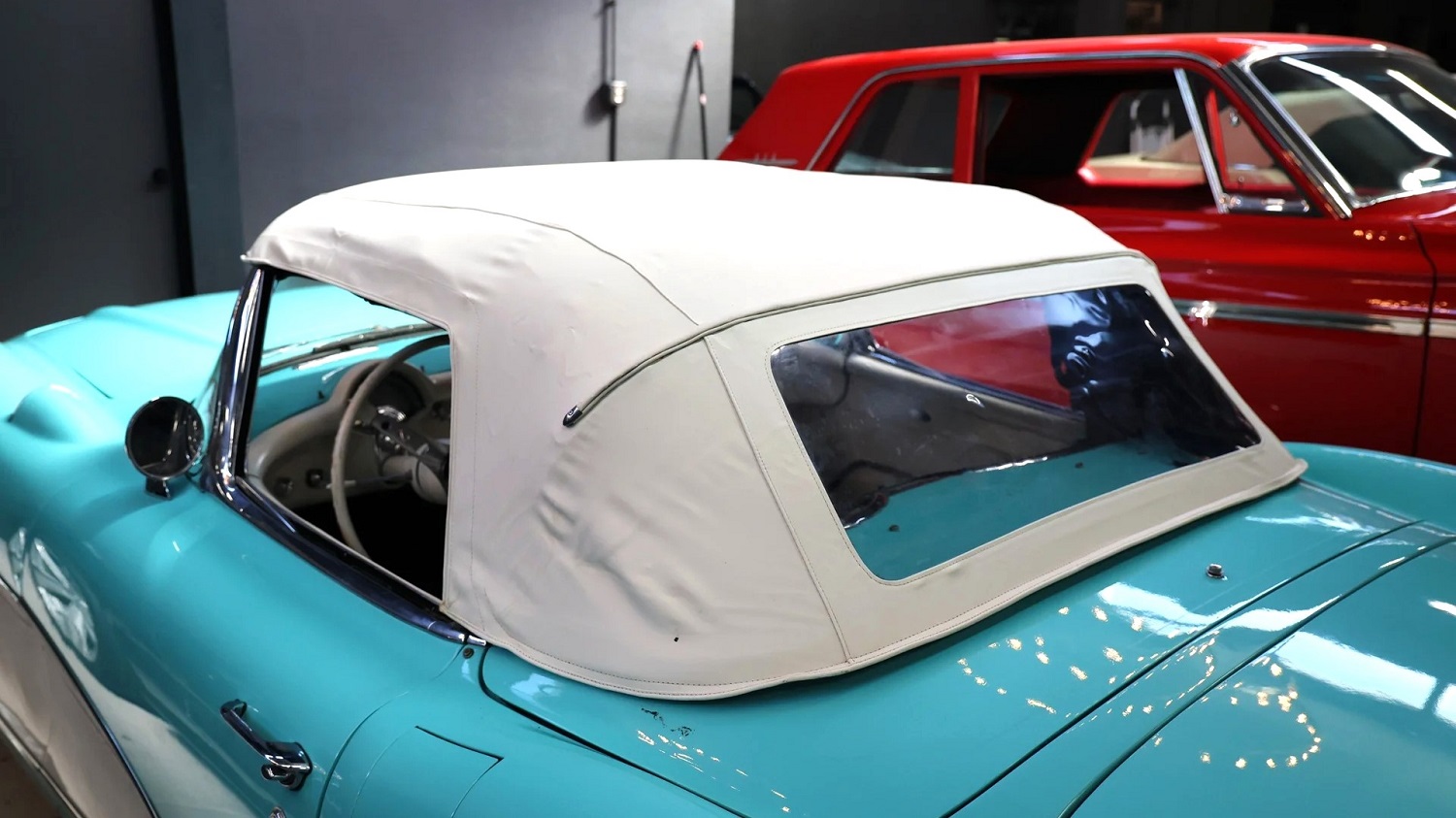
When the body-colored removable hardtop is not in place, an off-white soft top with a plastic rear window can be used to cover the passenger compartment.
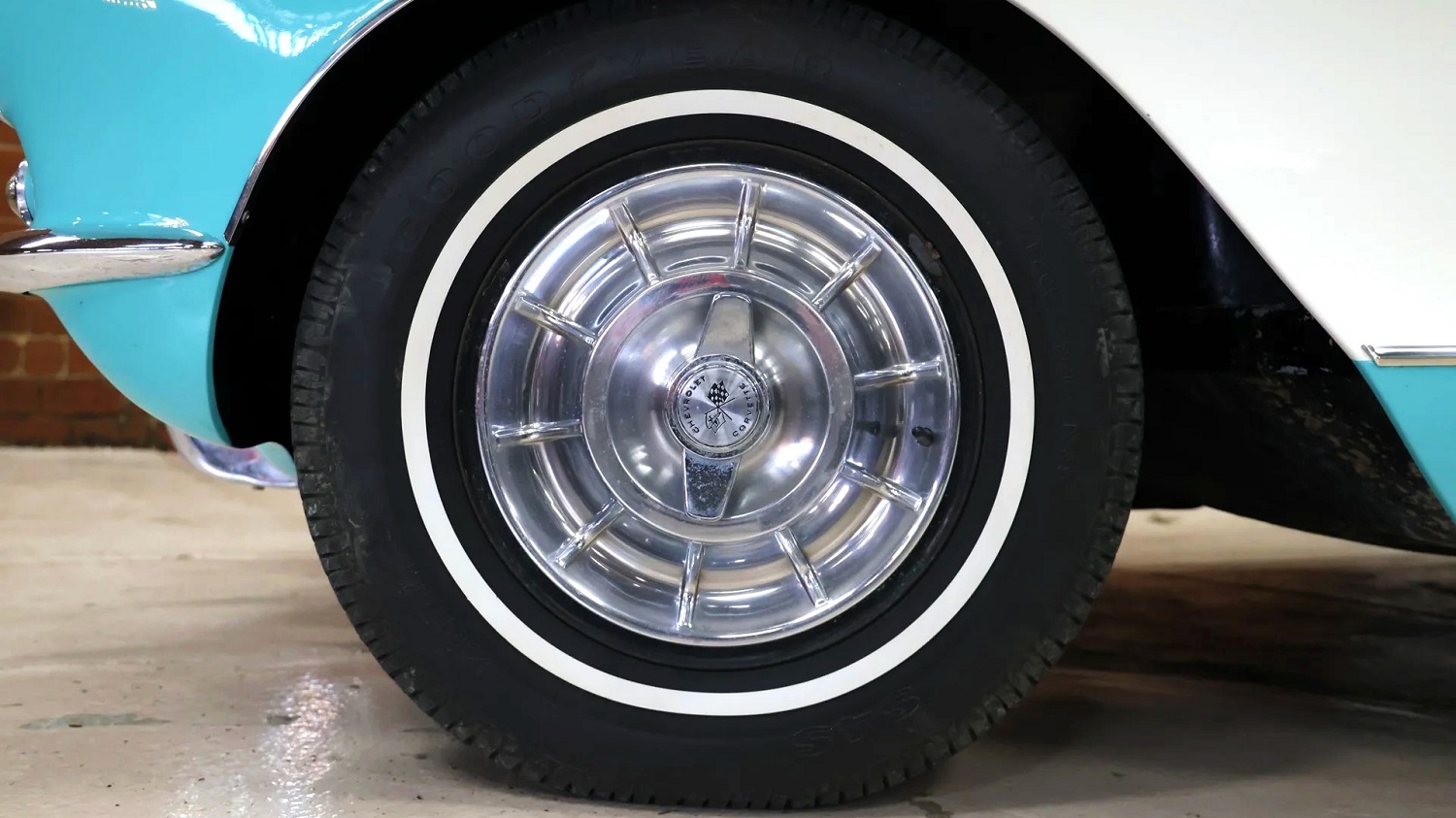
This first-generation Corvette rolls on 15-inch wheels wheels equipped with polished covers that have knock-off-style center caps and 205/75 whitewall tires.
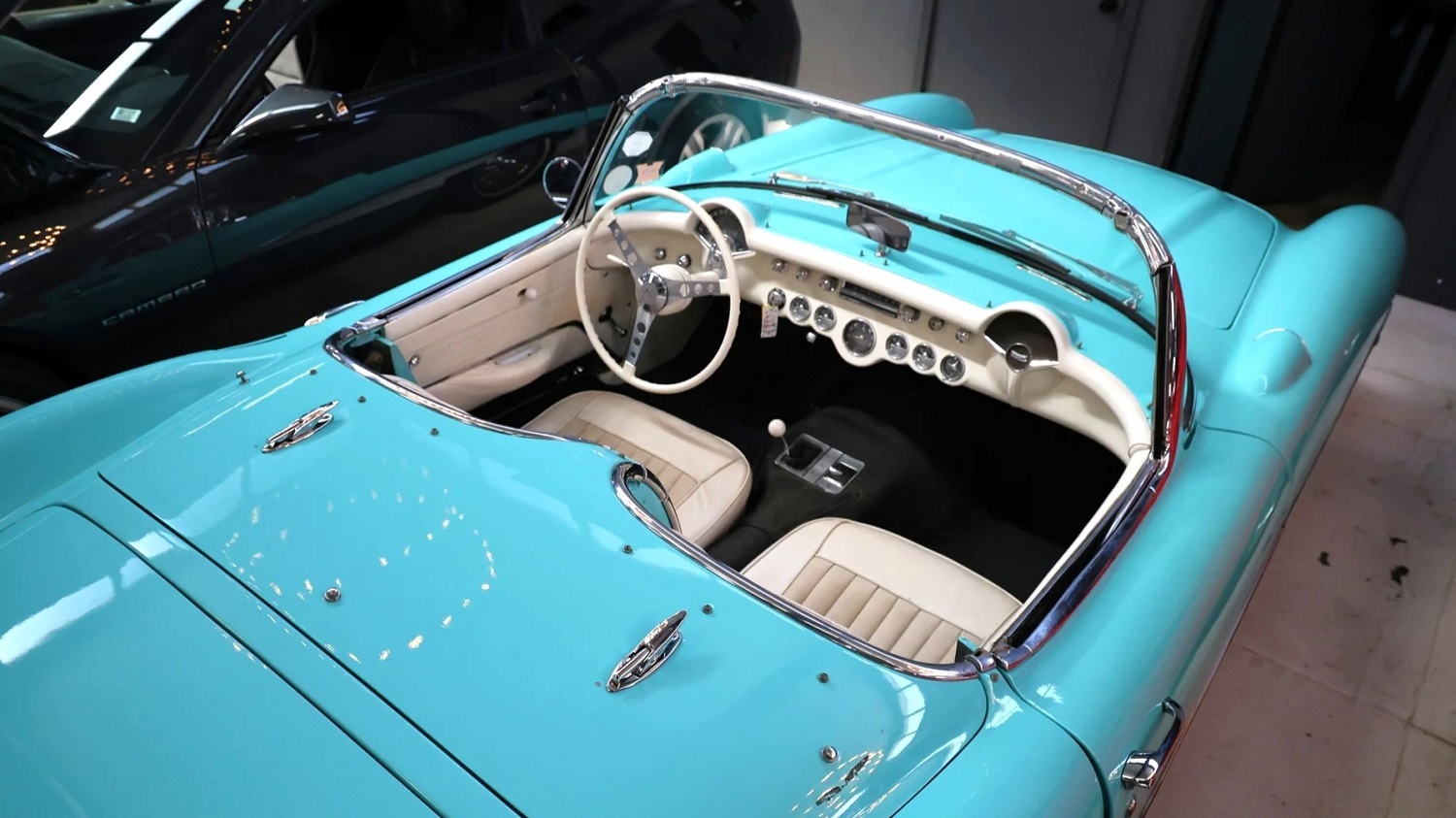
Inside the cockpit is a pair of Parchment vinyl bucket seats. Features include manual windows, dash-mounted rearview mirror, Wonder Bar radio, and heater. The trunk contains a whitewall spare tire.
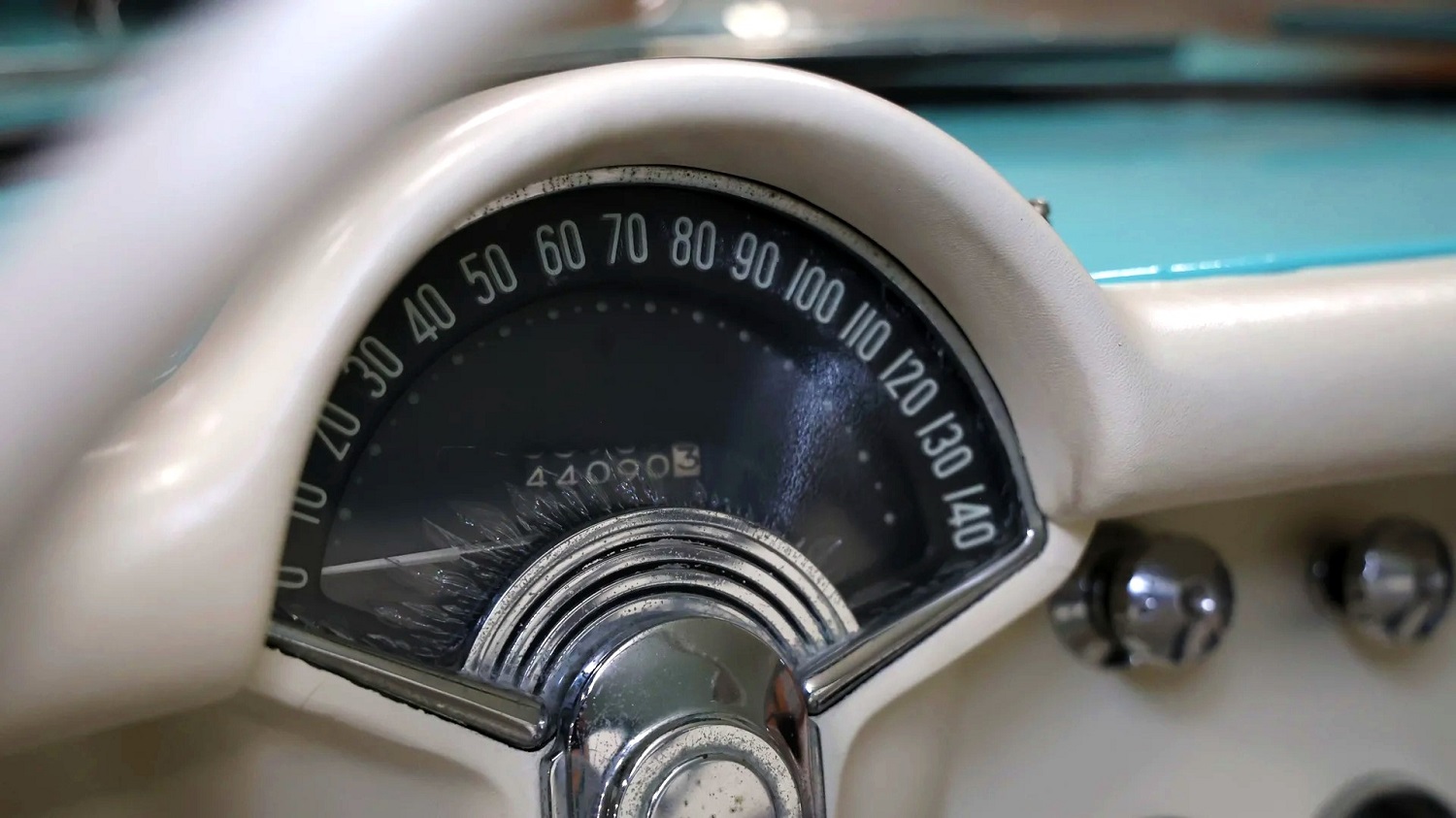
Instrumentation consists of a 140-mph speedometer, 6,000-rpm tachometer, and gauges for the fuel level, oil pressure, coolant temperature, and battery. The odometer shows 44,090 miles, but the true mileage on this vehicle is unknown.
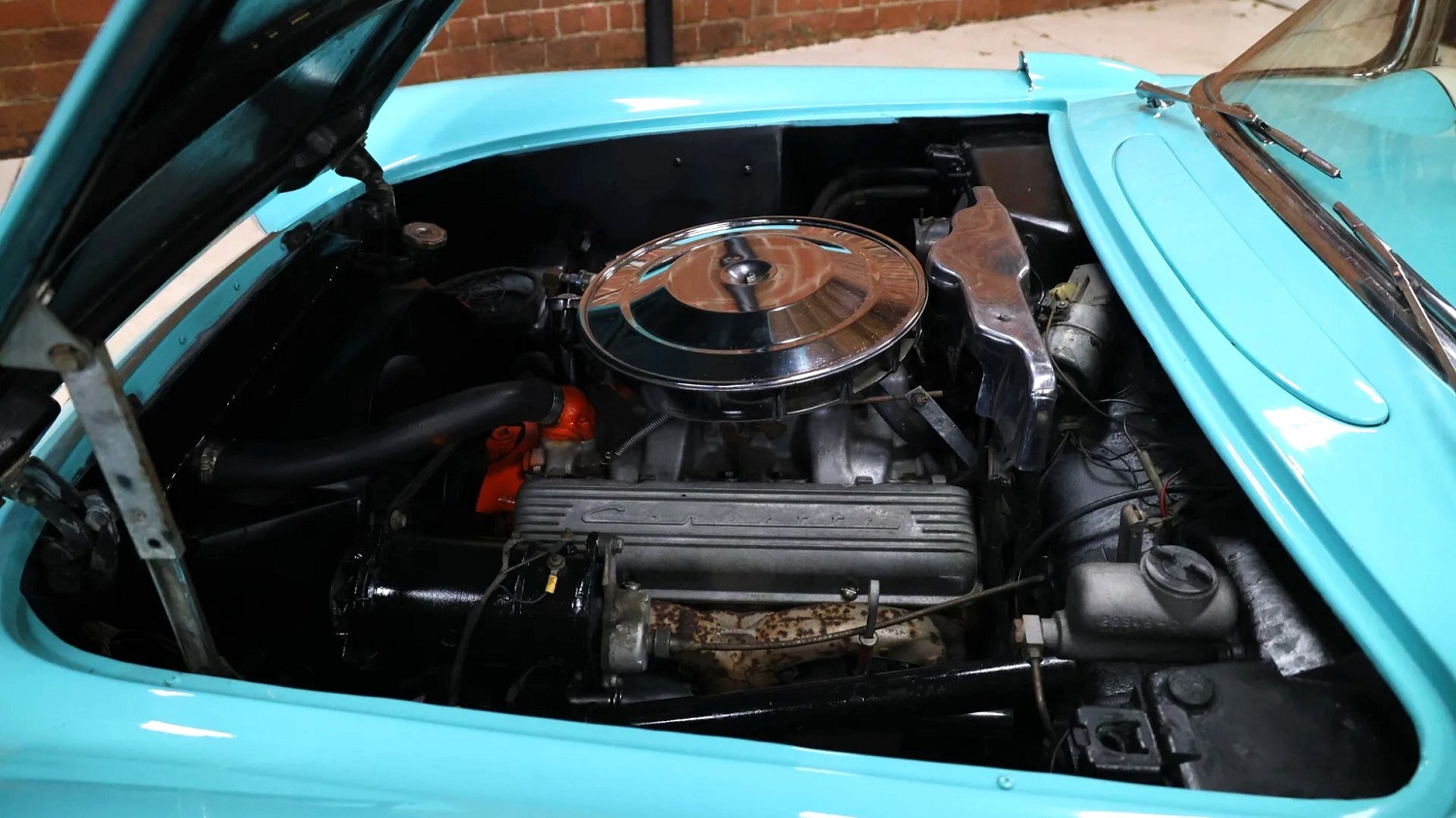
The original 283ci V8 has been replaced with a 327, which is equipped with ribbed valve covers and a polished air cleaner housing, and connected to a three-speed manual gearbox.
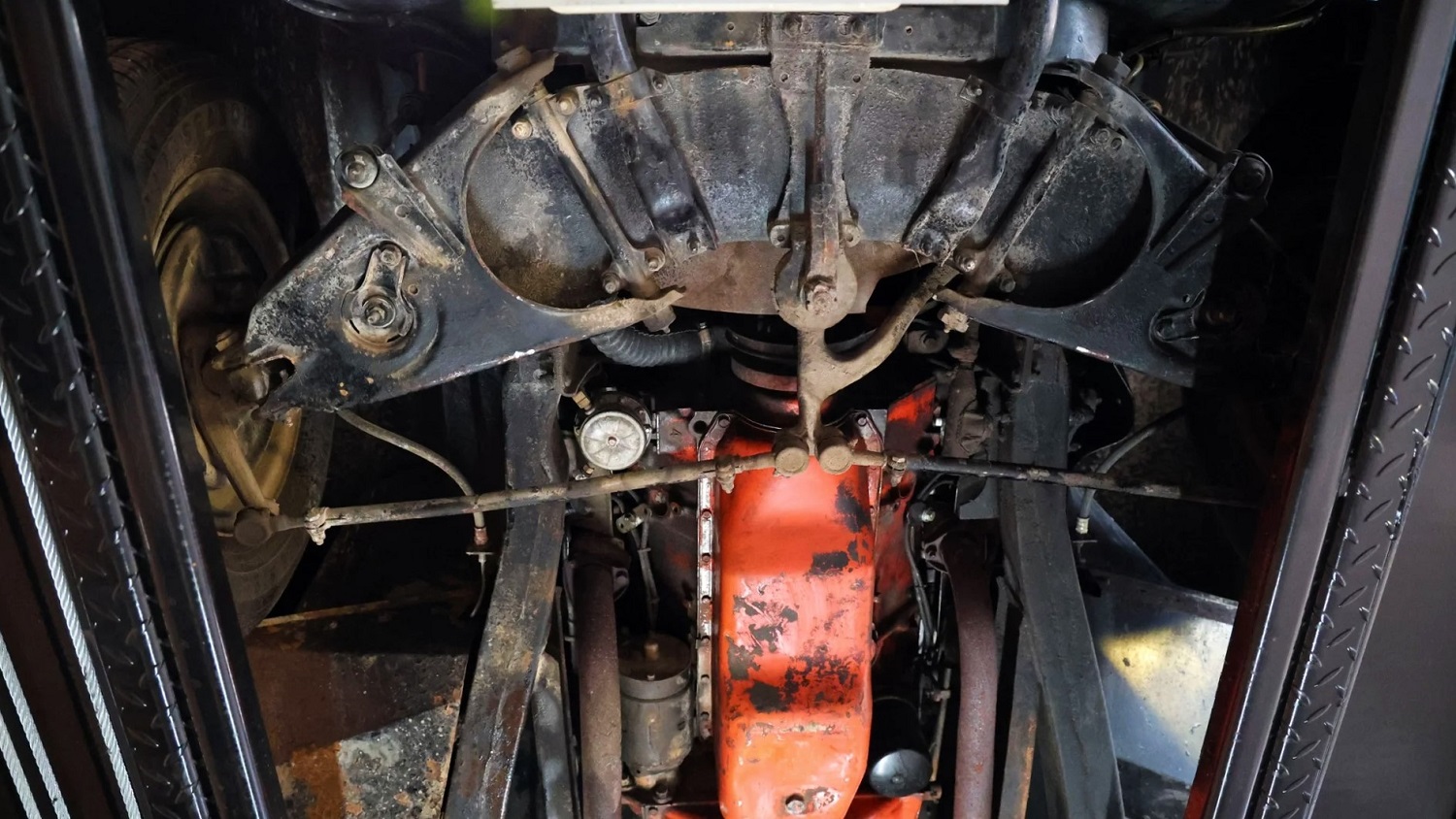
An independent front suspension and semi-elliptic rear springs help this Vette hold the road. Drum brakes keep it painted-side-up. A dual exhaust system exits from bumperettes on both sides of the rear end.

The auction for this 327-powered 1957 Chevrolet Corvette ends on Tuesday, June 3, 2025, at 11:30 a.m. (PDT).
Visit the AutoHunter listing for more information and a photo gallery
Color makes the car. You can have the most boring car, but paint it in an interesting hue and someone’s interest may be piqued. Or you can have a totally hot car that looks completely subdued in certain colors. Our Pick of the Day, a 1970 Ford Mustang Boss 302, falls in the latter category. It is listed for sale on ClassicCars.com by a dealership in Springfield, Ohio.
If you glance at the Ford Torino GT pace cars that were scattered around several tracks in 1970, they all were painted in Pastel Blue. Why did Ford choose this color for that purpose? It doesn’t project an image reeking of performance, and it also doesn’t call attention to itself the way you’d expect.

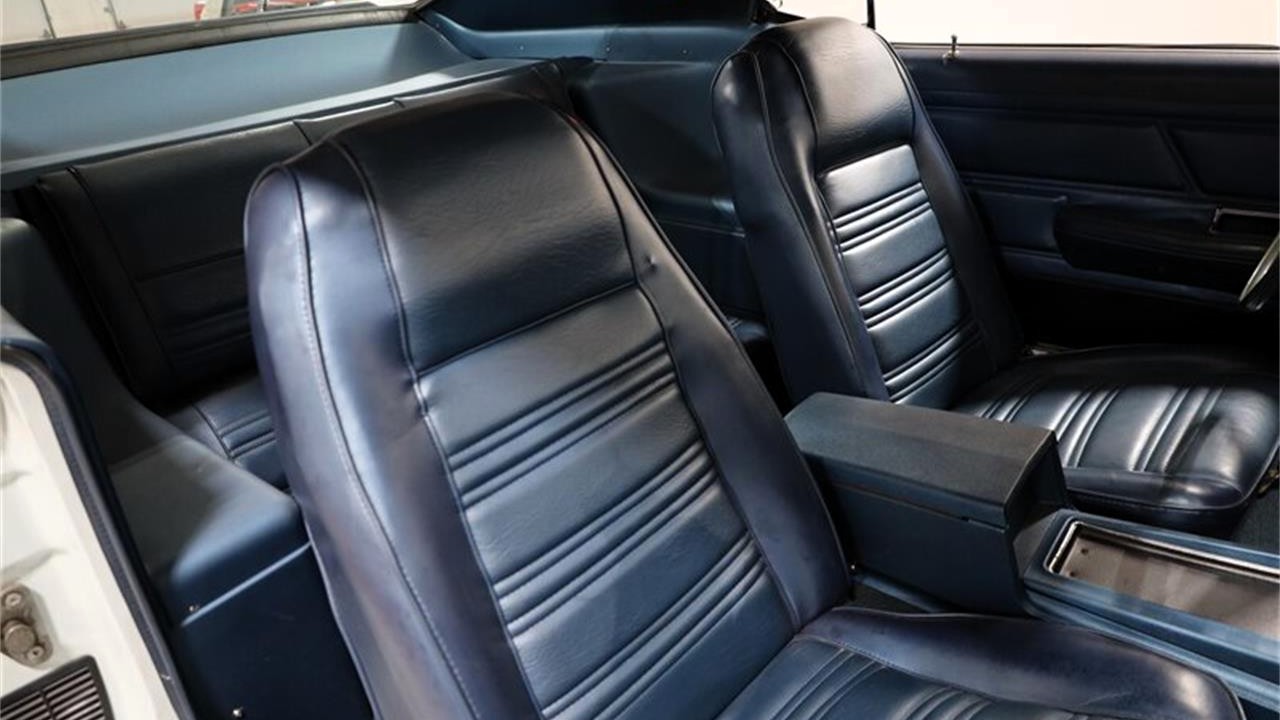
Let’s pivot to the Mercury Cougar Eliminator, which was available only in a few colors. For 1970, they seemingly were bright colors: Competition Orange, Competition Gold, Competition Blue, Competition Green, Competition Yellow . . . and Pastel Blue. If these colors feel familiar to Mustang fans, it’s because the 1970 Boss 429 was also available in most of these hues, though known as Calypso Coral, Grabber Orange, Grabber Blue, Grabber Green . . . and, yes, Pastel Blue.
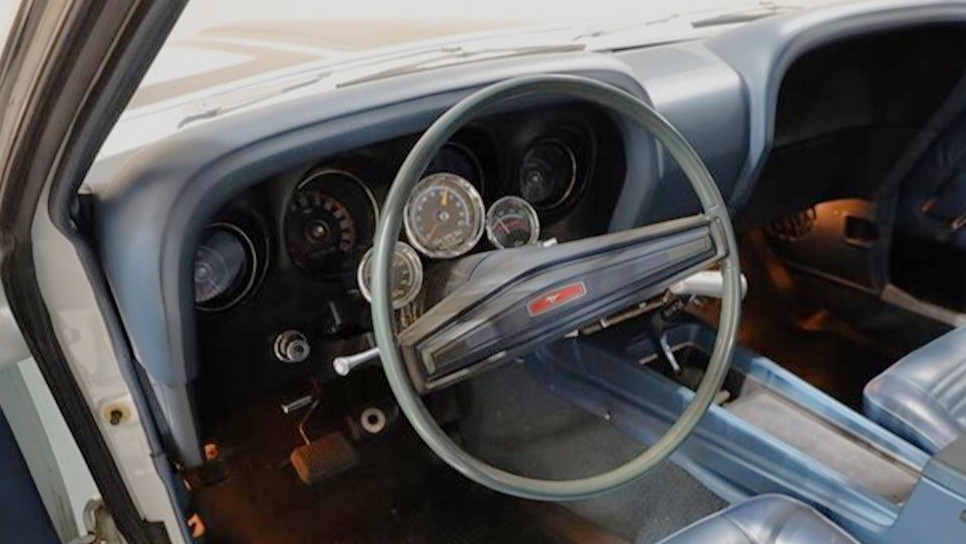
Why Pastel Blue was used as part of a limited set of colors for what were FoMoCo’s most image-laden and visible products is only known to dead Ford employees. Trying to make logic brings us to a dead end—for example, American racing colors are blue with white racing stripes, but the blue is closer to a Royal Blue than Pastel Blue, so insert shruggy here.
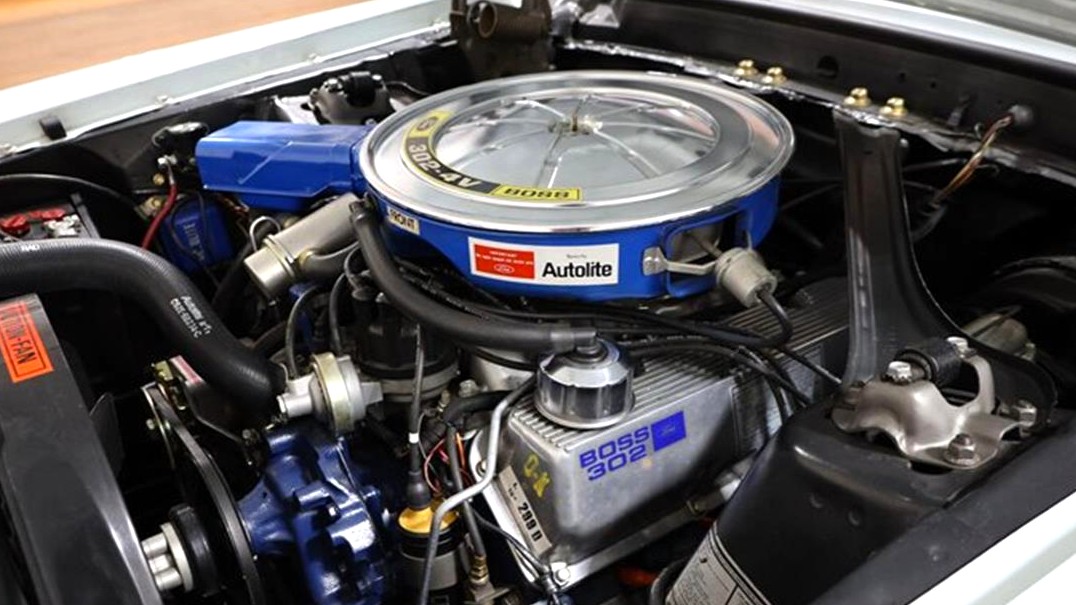
Interestingly, the 1970 Ford Mustang Boss 302 was not restricted to several colors. After an auspicious start in 1969, this Trans Am homologation package returned for 1970. Though the facelift removed two headlights, the new styling was overshadowed by a new stripe design, which gave the Boss 302 a fresh look that was equally as racy as its predecessor. Stripes were not the only thing new for the Boss 302 package—a Shaker hood scoop option was a popular addition, high-back bucket seats were now standard, and the formerly standard Magnum 500s were replaced by Ford’s basic wheel cover with trim rings. With dexterous use of the order form, one could spec the sportiest of Mustangs by ordering a SportsRoof with the Boss 302 package, Shaker, rear spoiler, and Magnum 500s.
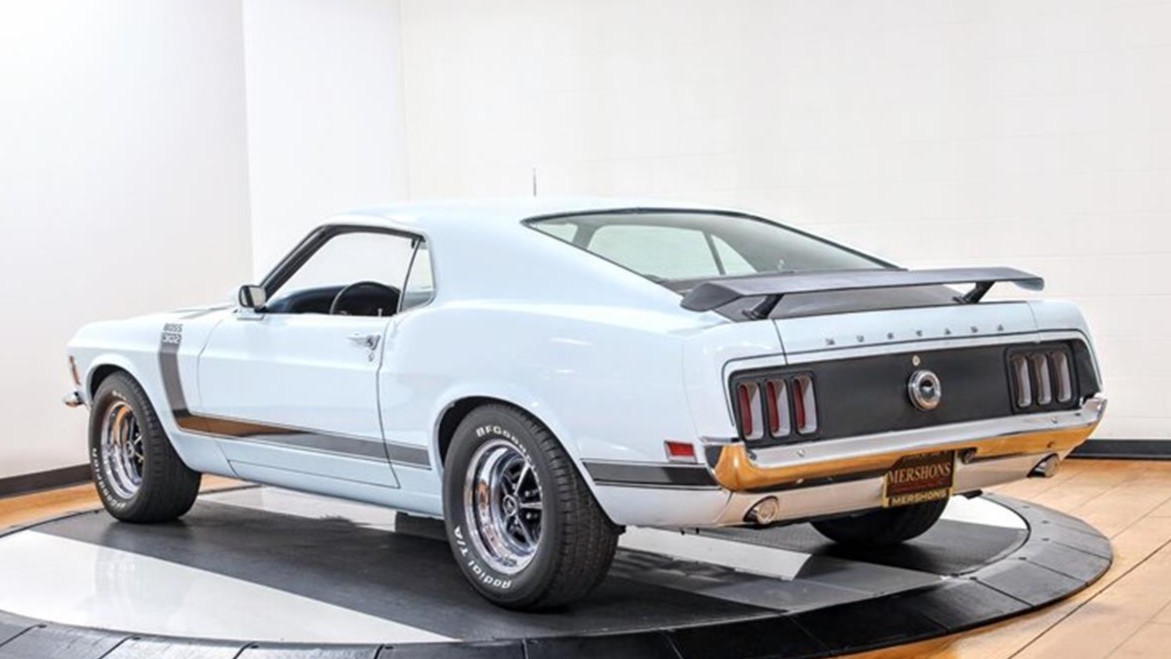
Yellow appears to be the most popular Boss 302 color for 1970. And Pastel Blue? Only 66 Boss 302s were built in this color. This 1970 Ford Mustang Boss 302 also stands out in other ways, as the only other options were an AM radio and F60 x 15 belted raised white-letter tires. Note the Marti Report—it shows this car was ordered for dealer stock. In such a subdued color? Strange! Also note that a previous owner added good stuff including rear spoiler, console, gauges, and Magnum 500s in addition to the Competition Suspension, quick-ratio steering, and front disc brakes that were part of the Boss 302 package. “Appears to be all-original sheet metal!” says the seller. “Like-new stainless and chrome! Clean and dry, rust-free underbody that is very nicely detailed!”
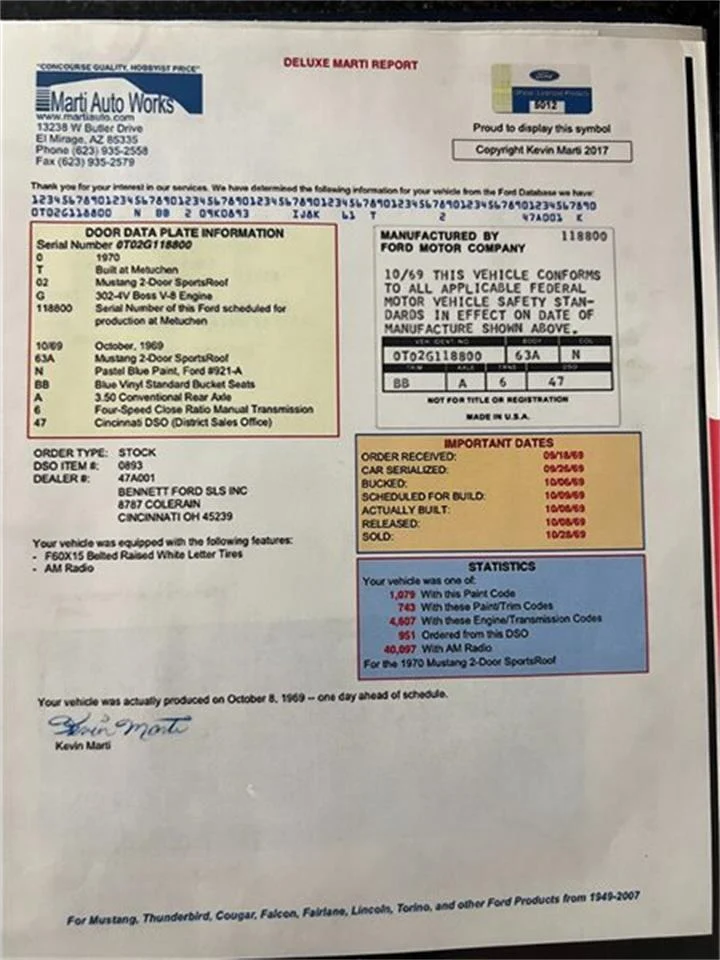
Boss 302s are easy to find, having had a high survival rate out of the 7,014 built. Very few of them were built in colors rarer than Pastel Blue. If you don’t want to call attention to yourself while calling attention to yourself, then this $75,900 Mustang is calling your name.
Click here to view this Pick of the Day on ClassicCars.com
This 1929 Ford Model A roadster was reportedly customized by Blair’s Speed Shop of Pasadena, California in the late 1950s or early 1960s, and it was refinished about 20 years ago. Power is from a 327ci Chevrolet V8 equipped with triple Stromberg carburetors on an Edelbrock intake manifold, and the steel body features a pickup bed with wood stakes and flooring. The three-speed automatic is linked to a 12-bolt rear end, and the convertible truck also has chromed suspension, red wire wheels, a dual exhaust system, and black leather upholstery. The truck was listed on BaT in May 2020 and sold on BaT in July 2021, and since the seller’s acquisition in 2022 it was fitted with ceramic-coated headers, PerTronix ignition, a transmission cooler, and replacement tires and shocks. This Model A pickup hot rod is now offered at no reserve with spare parts and a clean Connecticut title in the seller’s name.

The steel body panels and steel fenders were repainted some time in the 2000s. The bed features varnished wood slats with matching stake sides as well as a storage box, and the removable black fabric roadster top is equipped with a plastic rear window. The hood sides have been removed but are included.

The seller tells us the brakes were overhauled and the wheel bearings and shocks were replaced since the last auction. The suspension features a drilled drop axle up front with chrome ladder bars and a transverse leaf spring, while out back are chrome ladder bars, a Panhard bar, and coil springs.

Red-painted wire wheels with V8-logo hubcaps have staggered tires that were mounted by the seller.

The cab features a bench seat upholstered in black leather with red stitching and buttons, and matching trim panels are fitted to the doors. The center console has cup holders.

A T-style wood-rimmed steering wheel sits ahead of a body-colored steel dashboard with flourishes. Gauges are housed in a central cluster, while Stewart Warner supplementary instruments and a Sunpro tachometer are mounted below the dashboard. The light controls and a battery disconnect switch are located underneath the driver’s seat. The five-digit odometer is unreadable, and the seller estimates they have driven ~300 miles during their ownership.

The 327ci small-block V8 is equipped with three Stromberg downdraft carburetors, which the seller states have been rebuilt during their ownership, as well as an Edelbrock intake manifold and finned valve covers. The seller installed PerTronix ignition and replaced the ignition components as well as the radiator fan switch and fuel lines, and they installed the ceramic-coated headers that are linked to the dual exhaust system. The oil was changed in preparation for the sale.

The floor-shifted TH350 three-speed automatic transmission is linked to a 12-bolt rear end. The seller tells us the transmission and rear end were serviced and a transmission cooler was installed.

Removed and spare components are included as shown.

There’s a certain irony to learning about cars in the age of the Internet. With so many resources at our disposal (often from the convenience of our pocket), it also means there are many resources that will lead us astray. Both the good and the bad are subsequently amplified on forums and social media, creating an even bigger mix of useful and worthless information. One example that stands out pertains to vent windows.
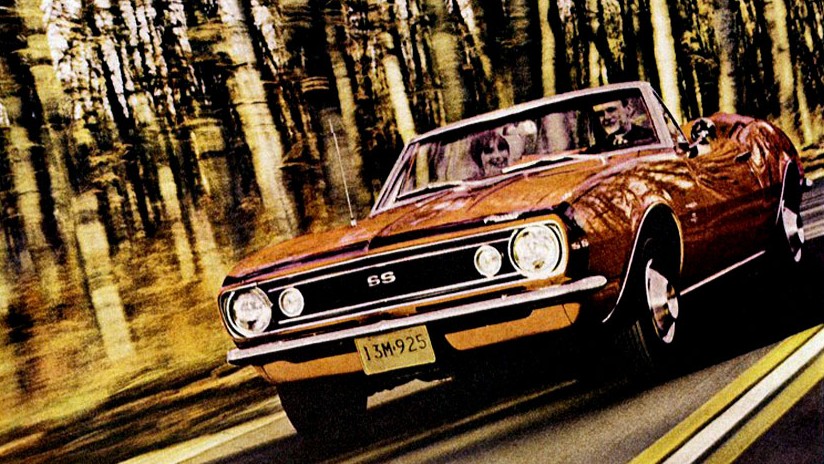
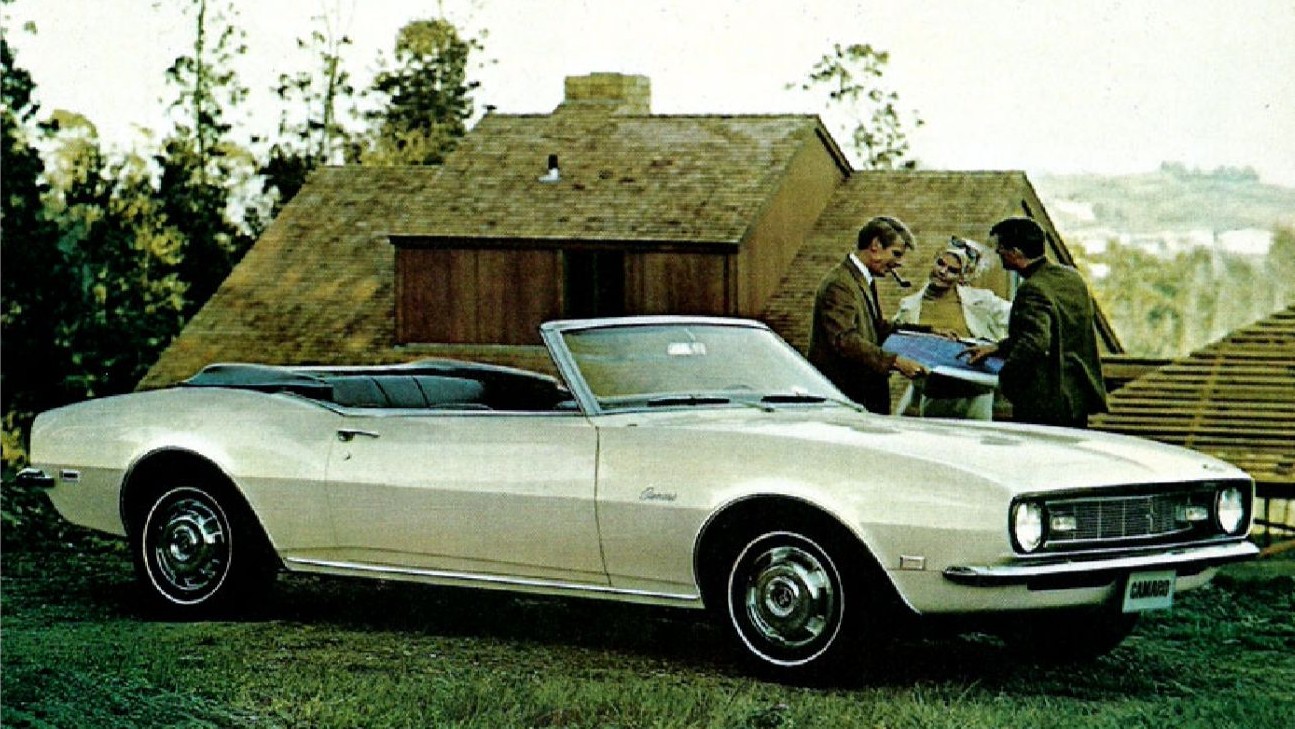
I theorize that the bad information that has been amplified is based on how we approach learning these days, as we have gone from archaeology (think junkyards) and a limited number of print resources to an infinite number of web pages. Today, it seems folks focus on the micro instead of the macro. When I was learning about cars, I approached them as if they were people. What do we look at first to distinguish one person from the other? The face; case in point: the first-generation Camaro. A long time ago, I figured out that a 1967 Camaro looks like a ’67, a 1968 Camaro looks like a ’68, and a ’69 Camaro looks like a ’69. The faces of the three appear different, with distinct grilles and parking lights (round for ’67, oval for ’68) or a restyle (’69) distinguishing them; out back, the ’68 taillights were divided versions of what were on the ’67.
But go online and you may find an answer that reads like this: “1967s have vent windows, and 1968s have side markers as regulated by the federal government.” Seriously—do I identify my mom based on her nose or her face? The tried-and-true method that I am espousing has possibly been lost on new generations of automotive enthusiasts, perhaps best exemplified by an inaccurate way of determining a 1969 GM A-body.

The A-body was GM’s standardized small body shared between Chevrolet and Pontiac models, with an occasional Oldsmobile, too. Starting in 1964, GM’s new mid-size platform was designated the A-body, a platform that included the Chevrolet Chevelle, Pontiac Tempest, Oldsmobile F-85, and Buick Special. Within each respective series there were several trim levels (i.e., Tempest, Tempest Custom, and LeMans) as well as performance variants based on a particular trim level (i.e., the GTO was based on the LeMans).
It’s been said that an easy way to discern a 1969 Chevelle SS 396 from a ’68 was due to Chevrolet omitting vent windows. So what do you make of the vehicle below?

You can see this is a 1969 Chevelle with vent windows, so what gives? Two-door Sport Coupes (aka hardtops) and convertibles were produced sans vent windows for 1969, while Coupes (aka post coupes), four-doors, and wagons continued to feature vent windows through 1972. Wouldn’t it be better to focus on the macro and learn to discern between the two years rather than focusing on the (incorrect) micro?
Why this tidbit of misinformation continues to persist is something I cannot answer, but old wives’ tales have a funny habit of finding an inconspicuous space in which to hide and live. Of course, the most famous of these is the Chevrolet Nova not selling well in Latin countries because the name means “it doesn’t go” in Spanish, when the truth is that a nova (a star that flares up and returns to its original luminosity) is the same word in both English and Spanish.
